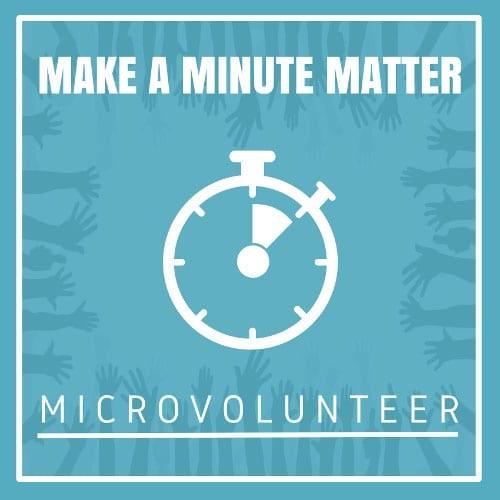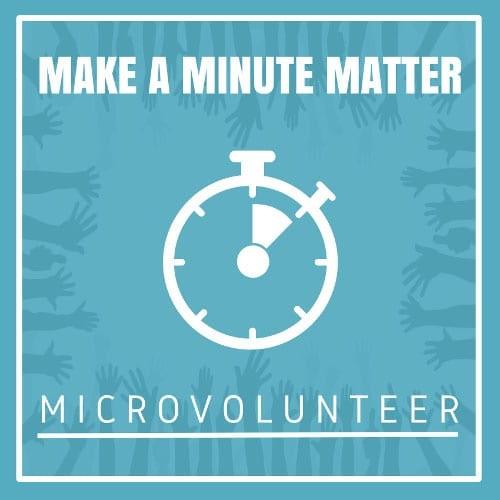- Home
- Campaigns
- Microvolunteering A Quick Way To Help
- Stories
- What Is Microvolunteering

What Is Microvolunteering?
Microvolunteering is volunteering that can be done in small bursts or periods of time. It's a way to volunteer that doesn't rely on big commitments, which can prevent some people from being able to participate. Find out more about how microvolunteering works and the ways nonprofits can use this strategy for maximum impact.
Microvolunteering may be the solution, allowing for one-off interactions. It increases engagement by allowing volunteers to help without committing to a regular volunteer schedule.
Microvolunteering may even lead to more regular commitments down the road, and sometimes these volunteers become donors, too.2
There are many things a person can do to help a cause which don't require a lot of time or effort. Such microvolunteering efforts can include:
- Pick up trash during a daily jog
- Sign a petition
- Donate an hour or two to working a booth at an event
- Start a fundraiser at work
- Sign up for a sponsored race that donates to your nonprofit
- Fill out a survey to help your nonprofit gather data
Share donation opportunities on social media - Donate goods
- Volunteer technical skills (such as writing or design) for small projects
One example of microvolunteering is the ALS Ice Bucket Challenge, in which people dumped buckets of water on their heads to raise money for the ALS Association. Viral videos of the challenges spread the word about the association, helping it to raise hundreds of millions of dollars and enabling it to increase its research funding by 187%.3 Individually, each volunteer only donated a small amount of time (and on their own schedule, too), but the collective impact was immense.
Keep in mind that microvolunteering only fills a specific need at a specific time. These volunteers give time on an ad-hoc basis, so don’t expect them to consistently provide the assistance your organization needs to operate. Having trained, committed, and scheduled volunteers is still essential. Microvolunteers should support your volunteer team, but they cannot replace them.
Key Takeaways
Microvolunteering is a way for volunteers to give their time to a cause they believe in without a big commitment.
Microvolunteering allows one-off interactions, which gives more people a chance to engage with your nonprofit and perhaps become regular volunteers in the future.
It's still important to coordinate and manage your microvolunteers; online tools can help.
Source: https://www.thebalancesmb.com
